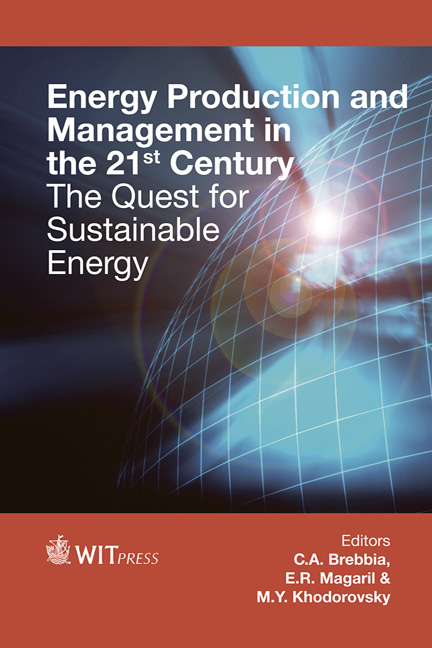Hydrogen Production By Supercritical Water Gasification Of Food Waste Using Nickel And Alkali Catalysts
Price
Free (open access)
Transaction
Volume
190
Pages
12
Page Range
285 - 296
Published
2014
Size
571 kb
Paper DOI
10.2495/EQ140281
Copyright
WIT Press
Author(s)
B. Amuzu-Sefordzi, J. Huang & M. Gong
Abstract
Supercritical water gasification (SCWG) of food waste was carried out with nickel and alkali catalysts (NaOH, KOH, Ca(OH)2, Na2CO3, NaHCO3 and K2CO3). The food waste was comprised of a variety of food items. The experiment was performed in a batch reactor at supercritical water (SCW) conditions of 400°C and 22.1MPa for 10mins. Hydrogen (H2) gas yield regarding the use of the catalysts was in the sequence; Ni-K2CO3 > Ni-NaOH > Ni-KOH > Ni- NaHCO3 > Ni > Ca(OH)2 > Ni-Na2CO3 > No catalyst. The results of this study indicate that using Ni was effective to support the steam reforming reaction. However its effects on the water gas shift reaction (WGSR) was little. Also carbon dioxide (CO2) was the predominant gas product in the presence of metal carbonates and bicarbonate. As a result, H2 selectivity was in the sequence, Ni-NaOH > Ni-KOH > Ni-K2CO3 > Ni-Ca(OH)2 > Ni > Ni-Na2CO3 > Ni - NaHCO3 > No catalyst. Furthermore, using 4g of NaOH was effective to shift the WGSR forward to produce a higher H2 yield and selectivity than when 4g of Ni was used. However, when equal amounts of Ni and NaOH were used, the conversion of food waste into gaseous products was necessary to produce more H2 during the WGSR. Keywords: hydrogen, food waste, nickel, alkali catalysts, water gas shift reaction, carbon dioxide, NaOH, selectivity, supercritical water, gaseous products.
Keywords
hydrogen, food waste, nickel, alkali catalysts, water gas shift reaction, carbon dioxide, NaOH, selectivity, supercritical water, gaseous products.





